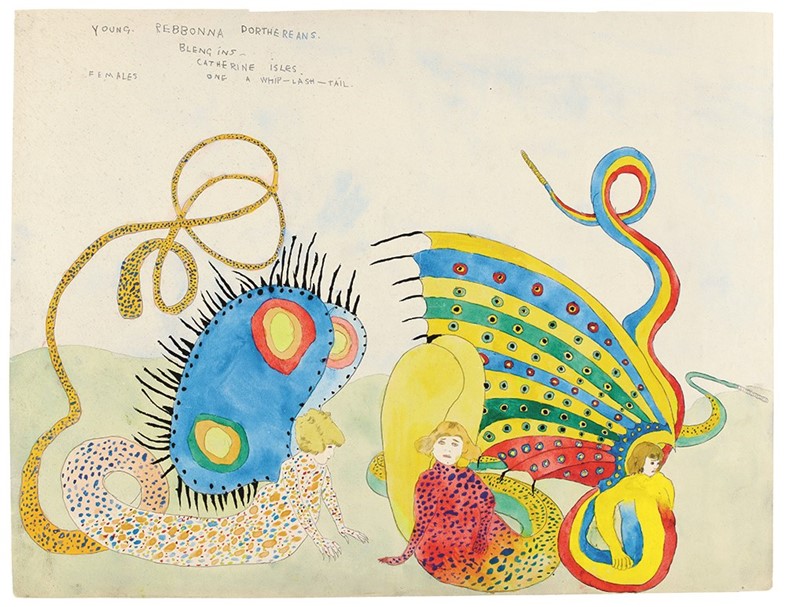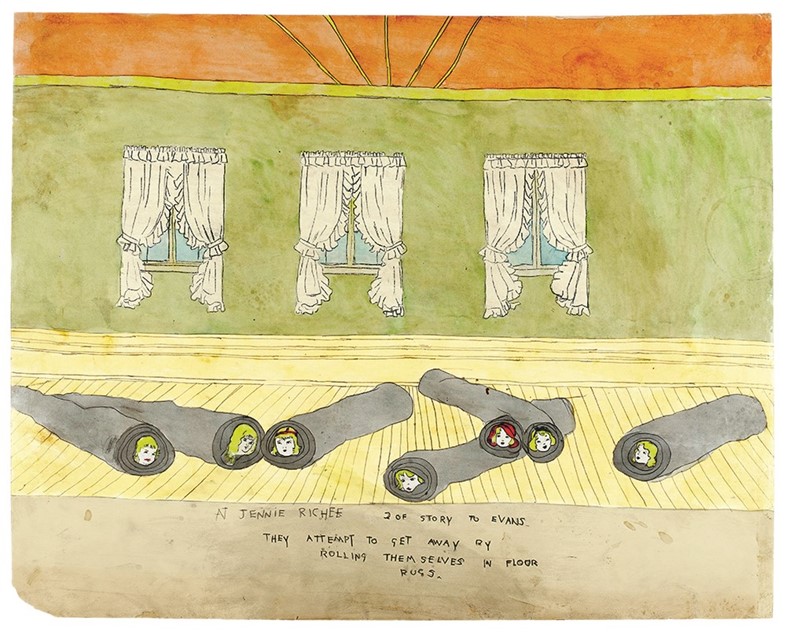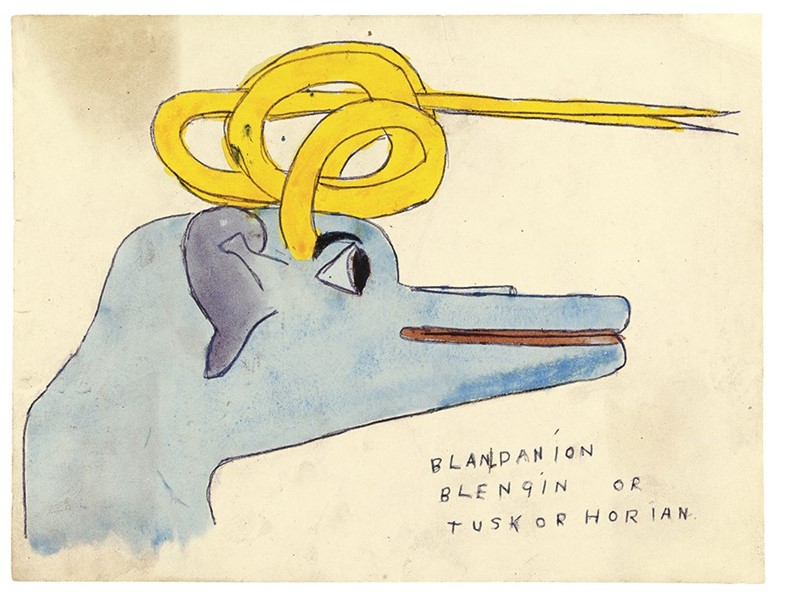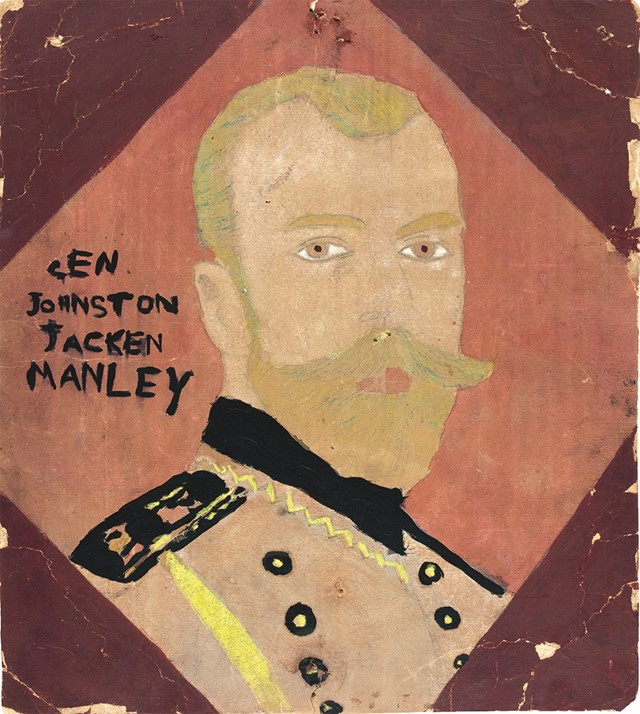Delve into the imaginary world of the outsider writer and artist, whose enigmatic works are brought to light in a major new exhibition
Who? Writer, recluse and visionary artist. Henry Darger is now considered the most prominent figure in outsider art. Born in Chicago in 1892, he was orphaned at the age of thirteen and institutionalised in the Illinois Asylum for Feeble-Minded Children. He had the nickname ‘Crazy’ whilst at school, but as he grew up he settled into a routine existence of attending Mass on a daily basis and undertook menial jobs such as washing dishes or caretaking. At night however, Darger worked in secret on what is now considered to be the longest known work of fiction ever made. His magnum opus ‘The Story of the Vivian Girls, in What is Known as the Realms of the Unreal, of the Glandeco-Angelinian War Storm Caused by the Child Slave Rebellion’ is a staggering 15,145 page work in fifteen volumes filled with several hundred alluring and vivid illustrations.

What? Set on a large planet on which Earth orbits as a moon, Darger’s book tells the story of seven blonde young sisters known as the 'Vivian Girls', who revolt against an evil regime enforced by the adult 'Glandelinians' to enslave children. Measuring up to twelve feet in width the watercolour illustrations that accompany the epic text are painted in seductive hues with infinite amounts of vivid detail that offers a window into the aesthetic of Darger’s twisted imagination.

The illustrations, like the story, are lurid and fantastical and depict the children of the revolution escaping precarious situations and concocting clever devices to decoy the book’s antagonists. Although the images appear innocent and almost saccharine at first glance, there are countless scenes of torture and violence, illustrating the acts of atrocity that the Glandelinians inflict on the children as part of the war, and in some images a group of naked children aim rifles at their enemies in the midst of a chaotic battleground. In the watercolours Darger represents this strange and beautiful world and its inhabitants including a species called the 'Blengigomeneans', which are gigantic winged beings with curved horns.

Why? The work uniquely combines compelling elements of American pop culture and history with Darger’s unique personal narrative. Darger was self-taught and despite showing a natural flare for pictorial composition, he struggled with drawing figures and bodies so he would often trace silhouettes from comics and magazines. In his illustrations, the children are occasionally depicted naked, which draws attention to their mixed gender and suggests that Darger was expressing his own concerns around gender identity. His work is often compared to the writings of Lewis Carroll and the art of Egon Schiele and Surrealist painter Leonora Carrington.

Darger inspired countless artists, most notably Jake and Dinos Chapman and Peter Coffin, and has had a profound effect on a range of art forms, including collections by fashion designer Anna Sui, a video game SISSYFIGHT2000 and British rock band the Vivian Girls took their name from his fantastical tome. A new exhibition at the Musée d'Art Moderne in Paris explores the imagination of Henry Darger through his beautiful illustrations and reinforces his position as the purveyor of outsider art.
Henry Darger is at Musée d'Art Moderne until October 11.
